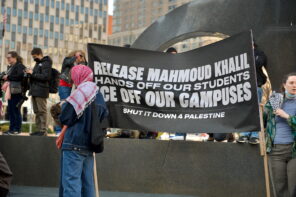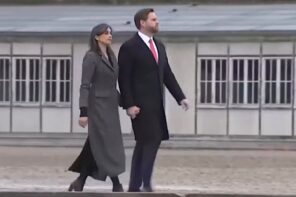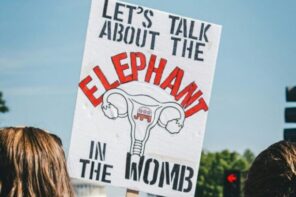On May 6, 2019, The Church of Jesus Christ of Latter-day Saints rescinded yet another of its family separation policies, that of “requiring couples who have been married civilly to wait one year before being sealed [in the temple].”
It’s unclear exactly why the policy was implemented sometime around 1960. Essentially, it withheld the blessings of a temple sealing for one year from LDS couples, primarily in the U.S., who chose to have a civil ceremony open to friends and relatives without temple recommends. The upshot was that couples had to choose between orthodoxy and loved ones without temple recommends, and they often chose orthodoxy, much to the heartbreak of non-Mormon family.
The “Discontinuation of One-Year Waiting Period after Civil Marriage” was announced in a letter addressed to “General Authorities; General Auxiliary Presidencies; Area Seventies; Temple, Stake, Mission, and District Presidents; Bishops and Branch Presidents” but not to rank and file members. The letter and an enclosure explain how leaders should “[help] members understand, prepare for, and enjoy the blessings of eternal marriage.”
This change is long overdue, and I should know: it was 2010 when I first wrote about how much damage the waiting period caused, and about efforts to persuade the brethren to abandon it. I wrote about it again in 2013, discussing the history of the policy as well as documenting more fully the harm and suffering that occurred because the church willfully denied many of its members something most people consider “a basic right: the option of having a civil wedding and inviting whomever they please without being religiously shamed and punished for it.”
Many are ecstatic over the end of a despised and despicable policy that divided families at a time that was supposed to be unifying and joyous. The policy was utterly unnecessary, unevenly applied, and made the church and its members seem selfish, cultish and cruel. Given the ease with which its discontinuation was accomplished—two pages, three signatures—I think it’s worthwhile to ask: why now?
Compare it to the church’s other family separation policy rescinded on April 4, when the church reversed course on its policy, begun in November 2015, of denying being blessed as an infant or being baptized at age eight to children of people in a same-sex relationship—without disavowing the doctrinal rationale behind it.
That policy was seen as so vile that it didn’t even last four years. The one-year waiting period for a temple sealing after a civil wedding is around 60 years old.
Compare this change to the changes in the temple ceremony announced on January 2, 2019, eliminating or at least softening some of the sexism of the sealing and endowment ceremonies. Those alterations had to have been in the works for months (if not a year or more), since new scripts had to be written and approved, and new versions of the movie depicting the temple ceremony had to be produced.
Discussing those changes, I wrote that I was unable to verify “reports of a recent survey of otherwise faithful Latter-day Saint women ‘who no longer [attend] the temple because of issues with the ceremony.’” Shortly thereafter, however, I spoke with Margaret Moore, a management consultant in Arlington, Massachusetts, who had been a temple ordinance worker and knew the liturgy well, but eventually stopped participating in the temple over concerns about its depiction and treatment of women.
Moore told me that in October 2018, she had been interviewed about her discomfort with the temple by a woman with the title of “Researcher in the Correlation Research Division” who encouraged Moore to be “very open and honest about our feelings; there was no judgment about anything that we said.” The researcher had a four-page interview protocol that “targeted any issue people might have that would keep them from attending the temple,” including LGBT+ and feminist issues, as well as “[temple] garments, comfort with ritual, accessibility and comfort of the buildings, length of the ceremony, temple recommend ritual interviews.”
The church’s willingness to solicit and hear criticisms of the temple, Moore said, “signaled to me that attendance was low. In my opinion, the church only makes progressive changes when it is in the interest of its survival. Leaders were therefore willing to explore anything that bothered people about the temple in order to get attendance up.”
Moore’s assessment seems accurate to me. I don’t think the church would have made any of the changes implemented in 2019 were they not necessary for the church’s well-being.
And even with Monday’s announcement, ambiguity remains about what this discontinuation actually entails: for instance, the letter states:
Where possible, leaders should encourage couples to be both married and sealed in the temple. Where a licensed marriage is not permitted in the temple, or when a temple marriage would cause parents or immediate family members to feel excluded, a civil ceremony followed by a temple sealing is authorized.
Does that mean that if it’s not parents but a best friend or a favorite cousin who would feel excluded, couples should go ahead with a ceremony loved ones can’t attend? What if a couple resists encouragement “to be both married and sealed in the temple”? Can their temple recommends therefore be withheld?
Finally, as with the other two changes announced in 2019, there’s no admission of wrong-doing, no acknowledgment of pain caused by the church’s action, and no apology.
Instead, it was individual members who apologized, on social media Monday and presumably in private, to loved ones they’d hurt by following the rules of a church that supposedly puts families first.










